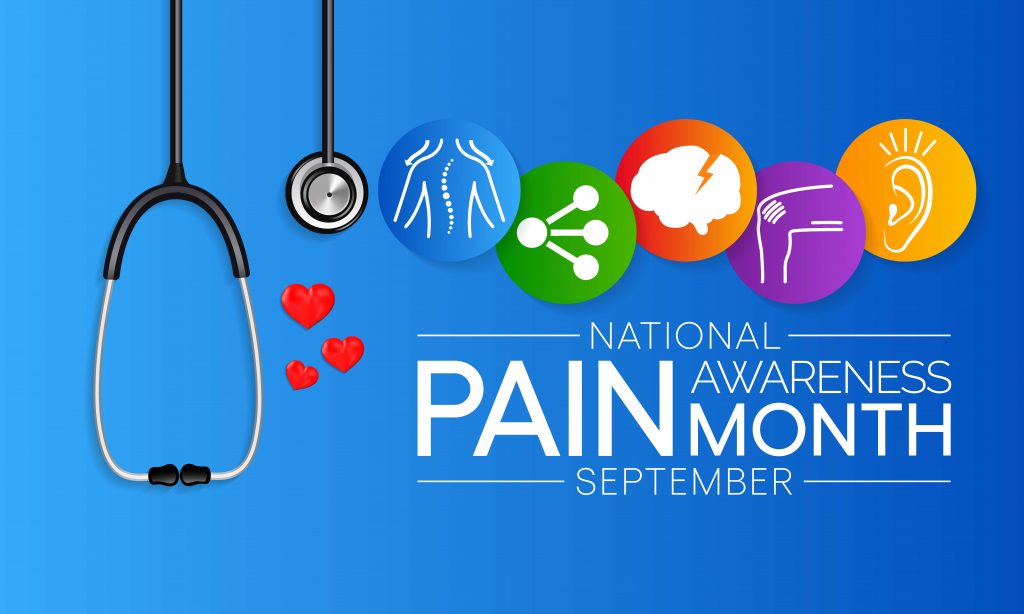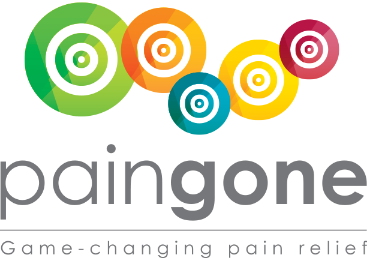
Sep 9, 2021
Paingone
September is Pain Awareness Month
In 2001, Pain Awareness Month was established to emphasize the impact of acute and chronic pain on individuals and families. The month is set aside to focus on the devastating emotional, physical, and economic impact pain has on one in three individuals in the United States. The financial cost each year is over $100 billion.
Doctors now recognize different types of pain, including tissue pain (nociceptive) and nerve pain (neuropathic). Tissue pain can be either dull, aching, or sharp in nature. Neuropathic pain is caused by damage to the nerves or central nervous system and is usually more of burning, tingling discomfort, or an electrical sensation.
While pain affects people from all backgrounds, minority groups and those in lower socioeconomic circumstances suffer disproportionately. They have more comorbid conditions, a higher incidence of chronic pain, and generally receive poorer quality of healthcare, particularly for pain. Currently, the National Institutes of Health (NIH) are seeking ways to address these disparities.
Individuals suffering from chronic pain, particularly pain caused by invisible conditions such as fibromyalgia and diabetic neuropathy, are often viewed skeptically by others when they complain of the constant nature of their pain or the disability it causes. In response, various organizations have sprung up to provide education and support to those suffering from pain and their families.
A helpful resource for finding support is Pain Connection, a group under the auspices of the U.S. Pain Foundation. If you visit their website, you will find support groups at the state and national levels, as well as pain support groups focused on specific conditions such as veterans, BIPOC, LGBTQ+, and caregivers. The National Fibromyalgia and Chronic Pain Association also offers links to state and local support groups.
In honor of National Pain Awareness Month, we hope you’ll visit one of the links above to find a support group either online or in your area to help you cope with the stress of pain and its impact on your life and the lives of your loved ones. You are not alone!
Could Nasal Cells Relieve Joint Pain?
As weird as it sounds, the cure for osteoarthritis pain could be at the tip of your nose. Researchers at Switzerland’s Basel University have announced a potentially revolutionary therapy for chronic inflammation caused by osteoarthritis. The research focused on alleviating knee joint pain, but doctors stressed that the treatment could also be used in other affected joints.
Specific cells in the nose made up of embryonic spinal cord and brain tissue, called neuroectoderm, were the focus of the research trials.
“Unlike the cartilage tissue in the joints, these cartilage cells originate from precursor cells of the neuroectoderm. They therefore have a distinct regenerative and adaptive capacity—or plasticity. Tissue grown from nasal cartilage cells seems also to retain these special properties,” explained co-lead author Professor Ivan Martin. He referred to the results as “Amazing.”

The cartilage that provides cushioning in the joints does not quickly grow back, leading to increased damage over time. This often leads to the need for joint replacement surgery, which requires extensive healing time and physical therapy for recovery.
The clinical studies in Basel demonstrate that cartilage cells in the nasal septum (the interior area of the nose that divides the nostrils) have a unique ability to regenerate damaged tissue. When inserted into the knee joint, the nasal cells contributed to reduced inflammation, improved range of motion, and pain reduction.
More Overdoses and Greater Mental Health Problems When Opioid Prescriptions are Reduced for Pain Patients
In recent years, regulatory policies and prescribing guidelines have become increasingly complex and challenging in response to the ongoing opioid crisis. In response, many health practitioners have reduced doses for chronic pain patients. The tapering patients have to endure while reducing the number of opioids they take can be traumatic, causing symptoms of withdrawal and depression.
Researchers at the University of California Davis Health studied the effects of opioid tapering and recently published their findings in the Journal of the American Medical Association (JAMA). According to researchers, patients whose opioid doses were tapered had much higher overdose rates and were more prone to mental health crises than patients who remained on a consistent dosage.
Alicia Agnoli, the lead author of the study and assistant professor of Family and Community Medicine at UC Davis School of Medicine, explained, “Prescribers are really in a difficult position. There are conflicting desires of ameliorating pain among patients while reducing the risk of adverse outcomes related to prescriptions. Our study shows an increased risk of overdose and mental health crisis following dose reduction. It suggests that patients undergoing tapering need significant support to safely reduce or discontinue their opioids.”
The study results emphasize that physicians need to monitor patients who are tapering off of opioid dosages carefully. Alternative pain relief options, strong support networks, and attention to the mental and physical coping mechanisms of chronic pain patients on opioids is needed to prevent overdoses and mental health issues.
This Week’s Pain Fact:
Osteoarthritis affects millions of Americans every year. Interestingly, osteoarthritis is more common in men than women under the age of 45. However, it is more common in women after the age of 45. Osteoarthritis in the hands is more common in women, which usually occurs after menopause. Because there is currently no cure for osteoarthritis, the focus is on relieving pain and reducing inflammation. The National Institutes of Health (NIH) recommend exercise, joint care, weight control, medication, and complementary treatments such as TENS to control pain and improve quality of life. Your doctor should appropriately monitor all treatments.
Is Paingone helping your patients and your practice?
Tell us your success story.
A robust retail strategy is essential to growing your practice.
You only have so many hours a week available for appointments. The fastest way to increase your bottom line is to incorporate profitable products that generate repeat business and build your reputation as a medical professional. That’s where Paingone comes in.
Contact us below to learn more about our products, wholesale pricing and how Paingone can benefit your practice.

